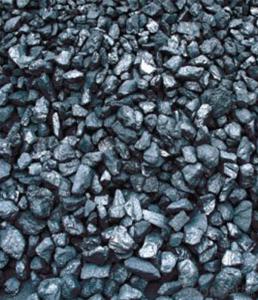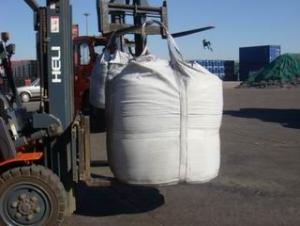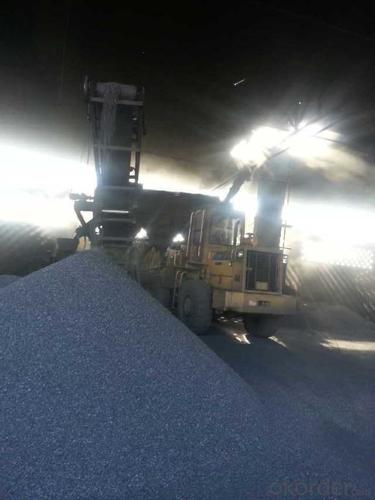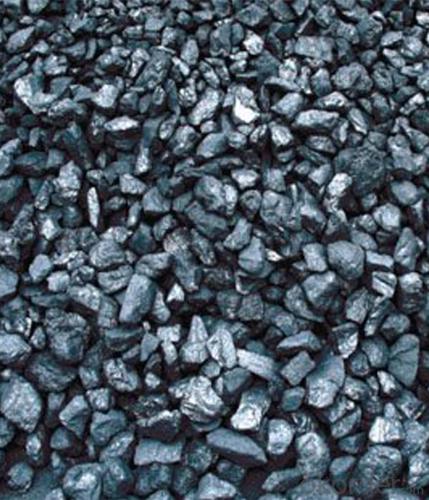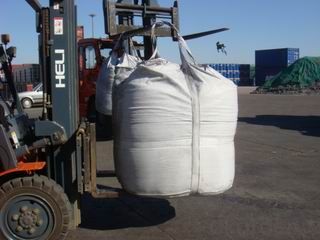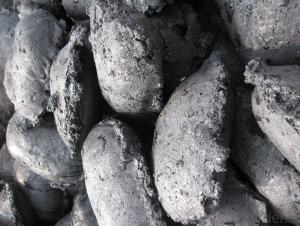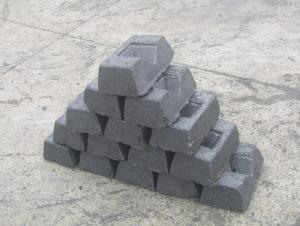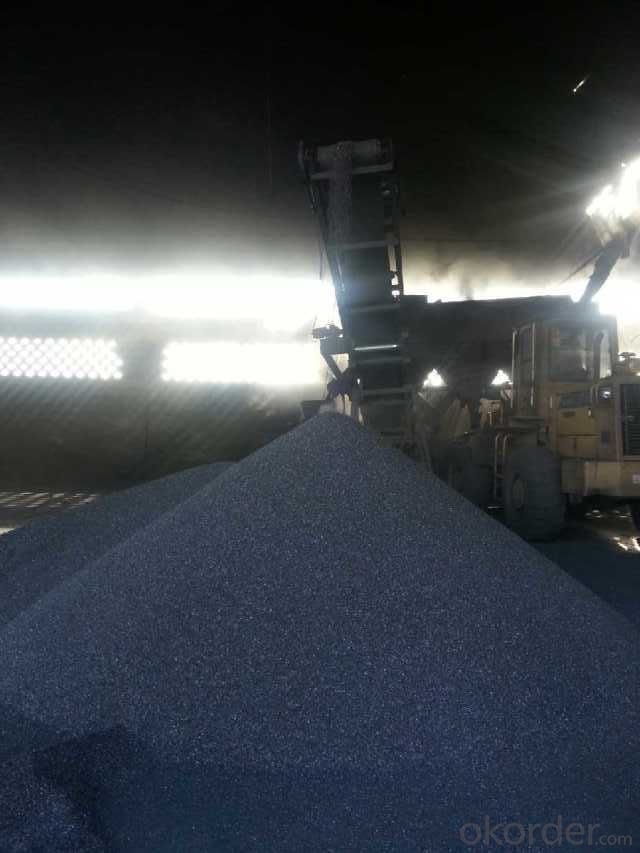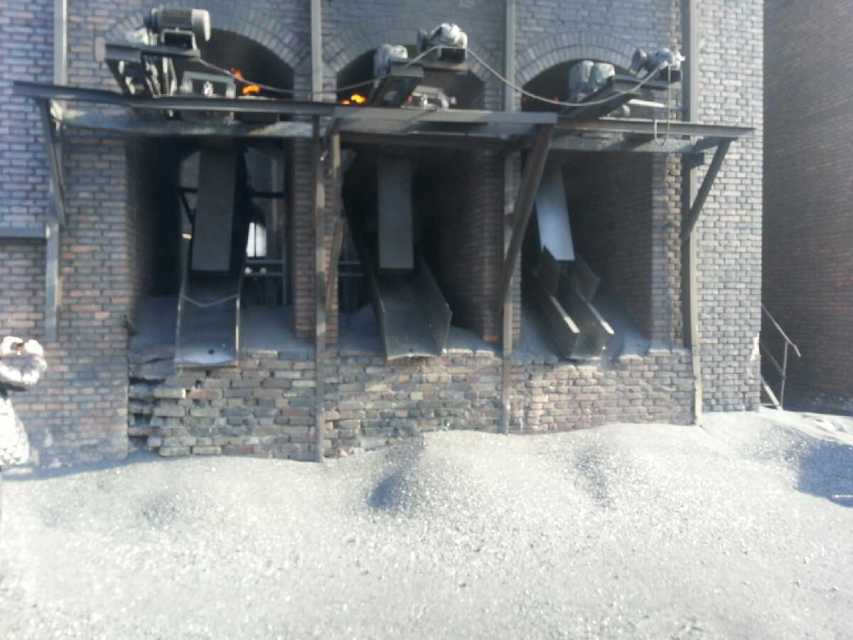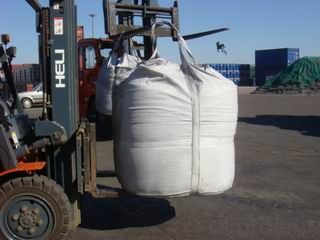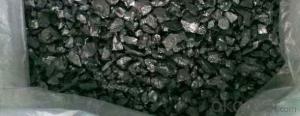FC 90% GAS Calcined Anthracite Sells Good in Middle East
- Loading Port:
- China Main Port
- Payment Terms:
- TT OR LC
- Min Order Qty:
- -
- Supply Capability:
- -
OKorder Service Pledge
Quality Product, Order Online Tracking, Timely Delivery
OKorder Financial Service
Credit Rating, Credit Services, Credit Purchasing
You Might Also Like
Specifications
Calcined Anthracite
Fixed carbon: 90%
S: 0.5% max
Size: 0-3. 3-5.3-15 or as request
- Q: How does carbon impact the stability of desert ecosystems?
- Carbon can impact the stability of desert ecosystems through various mechanisms. Increased carbon dioxide (CO2) levels in the atmosphere due to human activities, such as burning fossil fuels, can contribute to climate change, leading to higher temperatures and altered precipitation patterns in deserts. These changes can disrupt the delicate balance of desert ecosystems, affecting the availability of water and resources for plants and animals. Additionally, excessive carbon emissions can contribute to desertification, as increased CO2 can stimulate the growth of invasive plant species, which outcompete native vegetation and disrupt the ecosystem's biodiversity. Therefore, carbon plays a significant role in destabilizing desert ecosystems and should be managed to ensure their long-term sustainability.
- Q: What are carbon nanotubes?
- Carbon nanotubes are cylindrical structures made entirely of carbon atoms arranged in a unique way. They have a diameter of only a few nanometers, hence the name "nanotubes". These tubes can be incredibly long, with lengths that can reach up to several centimeters. Carbon nanotubes possess extraordinary properties due to their unique structure. They are incredibly strong and have excellent mechanical properties, being about 100 times stronger than steel at one-sixth of the weight. Additionally, they have exceptional thermal and electrical conductivity. These nanotubes can be categorized into two main types: single-walled carbon nanotubes (SWCNTs) and multi-walled carbon nanotubes (MWCNTs). The single-walled nanotubes consist of a single layer of carbon atoms rolled into a tube, while multi-walled nanotubes consist of multiple layers of these tubes nested within each other. Carbon nanotubes find applications in various fields due to their exceptional properties. In electronics, they are used as transistors and interconnects due to their high electrical conductivity. They are also utilized in energy storage devices, such as batteries and supercapacitors, due to their high surface area and high electrical conductivity. In materials science, carbon nanotubes are used to reinforce composites, making them stronger and lighter. They also have potential applications in medicine, as drug delivery systems and as imaging agents. Research is ongoing to further understand and harness the potential of carbon nanotubes. However, challenges remain in terms of their large-scale production, cost-effectiveness, and potential health and environmental concerns. Overall, carbon nanotubes represent an exciting and promising area of nanotechnology with vast potential for advancements in various fields.
- Q: Why can carbon fiber in addition to static electricity ah?
- Is graphite conductive? Think about it!
- Q: How are fossil fuels formed from carbon?
- Fossil fuels are formed from carbon through a natural process that takes millions of years. The process begins with the remains of plants and animals that lived millions of years ago. These remains, which contain carbon, get buried under layers of sediment in oceans, swamps, and other bodies of water. Over time, the pressure from the layers of sediment and the heat from the Earth's crust cause a process called diagenesis to occur. During diagenesis, the organic matter in the remains undergoes chemical changes, transforming it into a substance known as kerogen. As more layers of sediment continue to accumulate, the temperature and pressure increase further. Eventually, the kerogen undergoes a process called catagenesis, where it is heated to even higher temperatures. This causes the kerogen to break down and transform into liquid and gaseous hydrocarbons, which are the main components of fossil fuels. The liquid hydrocarbons form what is known as crude oil or petroleum, while the gaseous hydrocarbons form natural gas. Both of these fossil fuels can be extracted from the Earth's crust through drilling. In summary, fossil fuels are formed from carbon through a complex and lengthy process involving the burial, pressure, and heat of organic matter over millions of years. This process transforms the carbon-rich remains into hydrocarbons, which become the valuable resources that we use as fossil fuels today.
- Q: How does carbon affect the formation of smog?
- Smog formation heavily relies on carbon's role, particularly through carbon monoxide (CO) and volatile organic compounds (VOCs). Burning fossil fuels, like in vehicles, power plants, or industrial processes, releases carbon into the atmosphere as CO and VOCs. These carbon emissions, especially in densely populated areas, contribute to smog formation. Smog consists of various air pollutants, primarily ground-level ozone, formed when nitrogen oxides (NOx) and VOCs react in sunlight's presence. Ground-level ozone formation starts with carbon monoxide. It reacts with nitrogen oxides and sunlight, resulting in ozone, a key smog component. VOCs, on the other hand, combine with nitrogen oxides in sunlight to create more ground-level ozone. Moreover, carbon particles, also called black carbon or soot, can contribute to smog formation. These particles absorb sunlight, heating the surrounding air and causing temperature inversions. These inversions trap pollutants near the ground, preventing dispersion and worsening smog formation. Controlling and preventing smog formation relies heavily on reducing carbon emissions. Implementing cleaner technologies, such as catalytic converters in vehicles and cleaner fuels, helps decrease CO and VOC release. Additionally, promoting renewable energy sources and reducing reliance on fossil fuels significantly reduces carbon emissions, thereby mitigating smog formation.
- Q: What is the basic principle of carbon fourteen detection?
- There are 3 kinds of carbon isotopes in nature, and their weight ratio is 12:13:14. They are expressed by carbon -12, carbon -13 and carbon -14 respectively. The first two are stable isotopes. Carbon -14 is radioactive. It exists in the atmosphere and is generated in the upper atmosphere by cosmic rays, neutrons, and atmospheric nitrogen nuclei. It combines C4O2 molecules with oxygen in the atmosphere, which is the same as carbon dioxide (CO2). Therefore, it mixes with carbon dioxide to participate in the natural carbon exchange movement. It is absorbed by plants by photosynthesis and stored in plants. People and animals need to eat plants, so they are also stored in human and animal bodies. During the life of the organism, they continuously acquire the radioactive carbon from the atmosphere. But when an animal or plant dies, it stops absorbing and reduces the radioactive carbon in the body. For about 5730 years, its content could be attenuated by half. So physicists call the half-life 5730 years. Therefore, as long as the instruments to measure the trees, grain, animal bones and bone biological remains in the existing carbon content of -14, compared with its original carbon -14 level, you can calculate their death in many years ago, which can be inferred and their coexistence remains (such as construction sites, tombs or other relics how many years have elapsed since).Pro, please [adopted the answer], your adoption is the driving force for my answer, thank you.
- Q: What does carbon burning mean?
- Carbon burning means that the source of fire is carbon fire."Carbon coffee" means that the source of roasted coffee is carbon, fire, and sometimes special wood as fuel, because the roasted beans with carbon fire will have wood flavor, not carbon burning flavor.The charcoal pasta has nothing to do with carbon fire, but there is another name - egg Bacon noodles. Spaghetti comes in many ways, mainly because sauces play a decisive role, and carbon burning pasta is named for its sauce color.
- Q: What are the effects of carbon emissions on the stability of desertification?
- Carbon emissions have a significant impact on the stability of desertification. The release of carbon dioxide and other greenhouse gases into the atmosphere through human activities, such as burning fossil fuels and deforestation, contribute to global warming. This increase in temperature leads to several adverse effects on desertification. One of the key consequences of carbon emissions is the alteration of precipitation patterns. As the planet warms, the evaporation rate increases, causing more water to be held in the atmosphere. This results in reduced rainfall in many regions, including arid and semi-arid areas already prone to desertification. The decrease in water availability exacerbates the dry conditions, making it easier for desertification to occur and intensify. Moreover, higher temperatures caused by carbon emissions contribute to the acceleration of soil erosion. As the land heats up, it becomes more prone to erosion through wind and water. This leads to the loss of topsoil, which is crucial for plant growth and stability. Without a stable layer of topsoil, vegetation struggles to establish and survive, ultimately contributing to the expansion of deserts. Furthermore, carbon emissions also impact the health and productivity of plant communities. Increased levels of carbon dioxide in the atmosphere can stimulate plant growth in some cases, but this often leads to the proliferation of invasive species that are better adapted to the changing conditions. These invasive species outcompete native plants, reducing biodiversity and further destabilizing the ecosystem. Additionally, as desertification progresses, the loss of plant cover results in reduced carbon sequestration capacity, leading to even higher carbon dioxide levels in the atmosphere. In conclusion, carbon emissions have detrimental effects on the stability of desertification. They disrupt precipitation patterns, accelerate soil erosion, reduce plant productivity, and diminish the capacity to sequester carbon. It is crucial to reduce carbon emissions through sustainable practices and conservation efforts to mitigate the impacts on desertification and prevent its further progression.
- Q: What are the different types of carbon-based composites?
- There exist various carbon-based composites, each possessing distinct properties and applications. Some commonly encountered types encompass carbon fiber reinforced polymers (CFRPs), carbon nanotube composites, and carbon fiber reinforced ceramics. Among these, CFRPs stand as the most renowned and extensively employed carbon-based composites. They feature carbon fibers embedded within a polymer matrix, such as epoxy resin. CFRPs exhibit a lightweight nature, coupled with exceptional strength and rigidity, rendering them ideal for industries where weight reduction and high strength prove essential, such as aerospace, automotive, and sporting goods. Carbon nanotube composites represent another category of carbon-based composites that have garnered substantial attention in recent years. Carbon nanotubes possess cylindrical structures comprising carbon atoms arranged in a hexagonal lattice. Upon incorporation into composite materials, they bolster mechanical, thermal, and electrical properties. Carbon nanotube composites hold potential applications across fields like electronics, energy storage, and structural materials. Carbon fiber reinforced ceramics combine the superior strength and rigidity of carbon fibers with the exceptional ability to resist high temperatures exhibited by ceramics. These composites widely find use in industries necessitating materials capable of withstanding extreme temperatures, such as aerospace, defense, and nuclear sectors. Carbon fiber reinforced ceramics offer an excellent balance encompassing strength, thermal stability, and low weight. Additional types of carbon-based composites encompass carbon fiber reinforced metals, wherein carbon fibers are embedded within a metal matrix, and graphene composites, which incorporate graphene sheets into a polymer or metal matrix. These composites offer distinct properties like high electrical conductivity, thermal stability, and mechanical strength, unveiling possibilities for applications in areas like electronics, energy storage, and structural materials. On the whole, carbon-based composites present a wide array of properties and applications, rendering them indispensable materials within various industries requiring lightweight, strong, and durable substances.
- Q: What is carbon neutral tourism?
- Carbon neutral tourism refers to a type of tourism that aims to minimize or offset the carbon emissions generated by travel activities. It involves implementing sustainable practices, such as using renewable energy sources, promoting energy efficiency, and supporting carbon offset projects. The goal is to achieve a balance between the amount of carbon emitted and the amount removed from the atmosphere, thus reducing the overall carbon footprint of the tourism industry.
Send your message to us
FC 90% GAS Calcined Anthracite Sells Good in Middle East
- Loading Port:
- China Main Port
- Payment Terms:
- TT OR LC
- Min Order Qty:
- -
- Supply Capability:
- -
OKorder Service Pledge
Quality Product, Order Online Tracking, Timely Delivery
OKorder Financial Service
Credit Rating, Credit Services, Credit Purchasing
Similar products
Hot products
Hot Searches

